Quick Navigation:
Kabul Museum Project: An initiative of the University of Vienna and the National Museum of Afghanistan, Kabul
The National Museum of Afghanistan, Kabul is the primary repository in Afghanistan for safeguarding objects uncovered by archaeological excavations across the country. This invaluable cultural heritage and its custodians face many risks and obstacles. During more than thirty years of war, the entire infrastructure in Afghanistan was destroyed, including substantial damage and neglect to the National Museum and its collection. Desperate poverty and deepening social divisions driven by external interests continue to challenge economic and political stability. The dedicated men and women in the National Museum believe that their work is essential to the revitalization of an Afghan national identity and to the peace-building process. As custodians of Afghanistan’s long and glorious cultural history, they continue working to protect their heritage in the face of daily conflict and threats to the security of the museum and themselves as well as limited access to further education and resources.
Since 2005, the interdisciplinary Kabul Museum Project—a cooperation between the University of Vienna and the National Museum of Afghanistan, Kabul—has offered a diverse series of programs to support the “Kabul Museum” and exchange knowledge about Afghanistan’s rich cultural heritage. It remains the only program providing art historical and object-based education for the museum’s curatorial staff and is therefore critical for the preservation and interpretation of its collections.
Curatorial training seminars and intensive workshops in art history, archaeology, numismatics, computer science, and museum studies have been held in person together with leading experts at renowned museums and research institutions in Kabul, Kyoto/Tokyo, New Delhi, and Vienna as well as online.
The project has been conducted in the context of the former National Research Network “The Cultural History of the Western Himalaya (CHWH)” and the Research Platform “Center for Interdisciplinary Research and Documentation of Inner and South Asian Cultural History (CIRDIS),” both of which were directed by Univ.-Prof. Dr. Deborah Klimburg-Salter.
It has been made possible through the generous financial support of the Gerda Henkel Stiftung (2005 to present), The Barakat Trust (2007-2011), Oxford, and UNESCO (2005).
As of August 2021, there have been major political upheavals and dramatic changes in Afghanistan. The University of Vienna and the Austrian Academy of Sciences, together with their new cooperation partner Harvard University, actively continue to support the cultural heritage of Afghanistan and its custodians.
Quick Navigation:
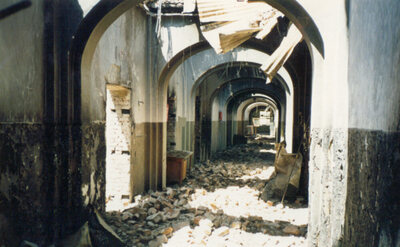
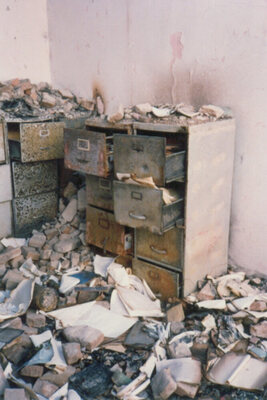
History of the Kabul Museum Project and Our Activities
Background
The war in Afghanistan left the Kabul Museum in a desperate state. The then director Dr. Omara Khan Masoudi and his staff were confronted by a seemingly insurmountable task. In 1993, a bomb destroyed the roof and top floor of the museum and caused a fire which reached the archive, destroying all the museum’s records including the complete collections’ inventory—every museum official’s worst nightmare. In the initial phase of recovery, several international governments contributed considerable sums to rebuild the burned-out museum and provided the expensive equipment needed for a modern museum. In addition to this substantial governmental financing for rebuilding the museum, UNESCO initiated the urgent first step—a re-inventory of the most precious collections which had been hidden for more than 20 years in a dramatic and courageous clandestine rescue initiated by the museum staff [hyperlink to DKS 2006 Twice Buried, Twice Removed / embed on page?]. At that time, the emphasis had to be on rebuilding the essential infrastructure of the museum. Masoudi was also forming his young curatorial team.
It is impossible for someone who had not visited the Kabul Museum before the war to realize that at that time it was considered one of the most important archaeological museums in Asia. The historical collections of the museum were all obtained from excavations conducted by distinguished international archaeological teams in collaboration with Afghan archaeologists. During the 1950s, mostly French experts, sponsored by UNESCO and coordinated by the successive directors A. Khozad and A. A. Motamadi, prepared the beautiful installation of each collection in modern cases. Also during the 1950s, UNESCO-financed experts finalized the catalogue and inventory of the collections following the then prevalent international model. It was this system that Masoudi, together with UNESCO, initially adapted during the UNESCO-funded re-inventory.
Prior to the beginning of the Afghan war most of the curators had either been trained abroad or had worked together with specialists in Kabul for many years, so they were able to continue the scientific inventory as new finds entered the museum. But this generation died out during the long war. Therefore, it was necessary, wherever possible, to invite foreign experts to inventory the collections. Fortunately, they were able in most cases either to invite the excavator or their successor. It was Klimburg-Salter’s good fortune to be asked to assist in this rescue action (Klimburg-Salter 2006) and to have been able to work with Dr. Masanori Nagaoka, the UNESCO culture official who coordinated this project “on the ground.”
At the same time, the museum began the long process of capacity building—particularly the curatorial staff. Some staff, such as Masoudi, had remained in the museum throughout the war and were instrumental in the revitalization of the museum. However, most of the curators were born during the war and were among the first graduates of the newly re-constituted Kabul University. Within the context of the UNESCO Afghanistan Funds-in-Trust Program, different governments began training the museum conservators. But there were no capacity building programs for the curators and general staff.
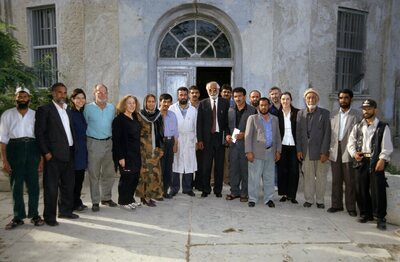
2003—Commitment
In 2003, Deborah Klimburg-Salter was invited to join the UNESCO working group on Afghanistan and participated in the second plenary session of the UNESCO International Committee (ICC) for the Conservation of Afghan Cultural Heritage. Among the decisions taken on this occasion was the initiation of the Kabul Museum scientific inventory planned by Christian Manhart (UNESCO).
2004—Laying the foundation of a cooperation
In 2004, Deborah Klimburg-Salter was invited to visit the National Museum together with a small Austrian team in order to contribute to a scientific inventory of the museum’s collections and to collaboratively design a capacity building program for the museum staff. During this first mission, it was possible to begin an inventory of confiscated objects from the site of Kharwar and an inventory of small fragmentary objects from the National Museum that had been destroyed by the Taliban. Each inventory team included, in addition to the foreign expert, several high-ranking Afghan officials and a young Kabul Museum curator. Klimburg-Salter and Susanne Novotny’s visit was sponsored by UNESCO Austria.
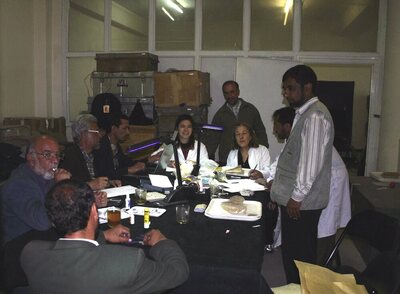
2005—Cooperation and funding
Klimburg-Salter conducted the scientific inventory of the Hindukush collections assisted by Novotny. This work was supported by UNESCO Austria and UNESCO International, the Austrian Science Fund, and the University of Vienna. Working on the inventory also led to intense art historical research on the respective collections: various articles by Klimburg-Salter as well as a MA thesis on Fondukistan by Novotny.
In addition to contributing to the inventory of the Buddhist collections, the Western Himalaya Archive Vienna (WHAV) at the University of Vienna, which is part of the Research Platform CIRDIS and closely linked to the National Research Network CHWH (Austrian Science Fund S98), has been digitizing a large collection of historical slides on the art and archaeology of Afghanistan. The goal is eventually to integrate this database into a website at the Kabul Museum.
Since 2005, the Curatorial Capacity Building Program has been financed by the Gerda Henkel Stiftung, and the travel expenses of the Austrian professors have been financed through the Austrian Science Fund.
2006—Preparation
In February 2006, Sean McAllister and Susanne Novotny participated in the workshop “Information Systems for Science, Cultural Heritage Management & E-Government in Afghanistan” held at RWTH Aachen University. In September 2006, Patrick McAllister and Susanne Novotny visited the Kabul Museum in order to obtain information on the current status of the database, as well as to make preparations for the training of two members of the Kabul Museum staff in database management and numismatics in Vienna. In order to make further preparations and discuss the training details, Deborah Klimburg-Salter met with Director Omara Khan Masoudi in December 2006.
2007—First international training seminar, Vienna
The first training in Vienna took place in January 2007. Two curators from the Kabul Museum, Ezatullah Sharifi and Najibullah Assadi, completed a two-week training program at the University of Vienna and the Coin Cabinet of the Kunsthistorisches Museum Vienna.
Since 2007, the Barakat Trust, Oxford has funded our capacity building programs in the Kabul Museum, providing intensive English language and computer literacy courses for all staff.
2008—Second international training seminar, JNU, Delhi
The second phase of curatorial training was shifted from Kabul to Delhi due to security issues. Curatorial training in art history, numismatics, and database and website management was conducted in cooperation with the Jawaharlal Nehru University (JNU) School of Arts and Aesthetics and the National Museum of India in Delhi from October 6-31, 2008. Admission to the curatorial training depended on the successful completion of The Barakat Trust language and computer courses and was financed by the Gerda Henkel Stiftung.
Report:
2009—Agreements and further goals
In January 2009, Sean McAllister and Arezou Azad went on a fact-finding mission to Kabul. Meetings took place with Director Masoudi and representatives of the Ministry of Culture and Information to work out an agreement as to the future status of the University of Vienna–Kabul Museum programs. A bilingual document establishing the goals of this project was drawn up under Director Masoudi’s guidance. Deborah Klimburg-Salter met again with Director Masoudi in Kabul to discuss the current programs.
New acquisitions to the museum offered an important focus for the capacity building program during the visit by Klimburg-Salter and Dr. Luke Treadwell (Oxford University). Rescue archaeology began in 2009 at the major Buddhist site of Mes Aynak, southeast of Kabul, and the objects that could not be left at the site were transferred to the National Museum. Dr. Treadwell also reviewed and discussed the recent acquisitions to the Islamic and numismatic collections with their respective curators in the National Museum. With Dr. Treadwell’s assistance, the capacity building program expanded to include early Islamic numismatics.
The program was also extended to include training on exhibition design and management (online format). In the course of this work, Kabul Museum curators worked together with the Vienna team on creating small exhibitions for display in the Kabul Museum. English classes continued at the museum, instructed by Mr. Wahid.
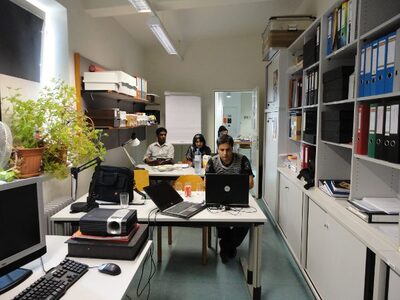
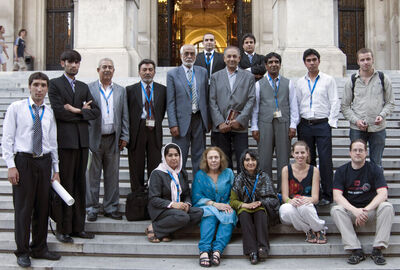
2010—Third international training seminar, Vienna
In January, Director Masoudi visited Vienna to discuss the possibility of a Kabul Museum exhibition at the Kunsthistorisches Museum and the curator training planned for summer 2010. Mr. Masoudi thanked “The Barakat Trust Kabul Museum Staff Program” and expressed his gratitude for this most important initiative.
Eight curators participated in the third workshop held from May 31 – July 10, 2010 in Vienna at the Kunsthistorisches Museum and the University of Vienna, as well as at the Joanneum in Graz. The seminar was financed by the GHS and encompassed training in the fields of art history, numismatics, database management, and museum studies. The success of the program can be attributed in part to the curators’ great improvement in spoken English during their courses in Kabul financed by The Barakat Trust.
The curators also participated in the EASAA (European Association for South Asian Archaeology and Art) conference held in Vienna from July 4-9, 2010. They worked independently under the guidance of our experts to design posters related to each of the museum’s curatorial sections for display during the Afghanistan session of the conference.
In November 2010, Deborah Klimburg-Salter traveled to Kabul, dedicating much of her time to planning future aspects of the program together with Director Masoudi. The working hours of the English teacher were increased to 30 hours per week. In addition to the English courses, he supported the curators with database entries, work on exhibitions including Mes Aynak, and email communication.
Reports:
KMP-Report Curator Training 2010 [PDF] KMP-Report Curator IT-Training 2010 [PDF]
2011—Visits in Kabul and fourth international training seminar, Vienna
Sean McAllister spent a week in Kabul in January 2011 to configure a better internet connection for the Kabul Museum and to assist the curators with some database issues. In September, Deborah Klimburg-Salter and Michael Alram (Kunsthistorisches Museum, Coin Cabinet) visited the museum to discuss future goals of the cooperation.
From October to December 2011, six Kabul Museum curators (Nasrin Belali, Shazia Hamdrad, Ajmal Yaar, Farhad Sediqy, Mohammad Atiq Hamdard, and Mohammad Fahim Rahimi) participated in the fourth training seminar held in Vienna. The completed coursework at the University of Vienna, including attending Prof. Klimburg-Salter’s seminar “Arts of Afghanistan” accompanied by tutorials taught by graduate students Verena Ziegler and Natasha Kimmet. Separate sessions were conducted by Dr. Michael Alram in pre-Islamic numismatic history and by Dr. Treadwell in early Islamic numismatic history in Afghanistan. Two curators trained in use of the numismatic database system developed for the museum by Dr. Klaus Vondrovec (in the context of the Kabul Museum Project). Another two curators trained in object database management in the Western Himalaya Archive Vienna (WHAV). The curators further benefited from participation in the CHWH research group and use of the extensive facilities at the Department of Art History and related institutions. These scholarships were financed by The Barakat Trust.
2013—Joint workshop, Kyoto, Japan
Senior scholars from Austria, Japan, and Afghanistan—including the Kabul Museum Director Dr. Masoudi—as well as members of the curatorial and conservation staff participated in this workshop co-financed by the Gerda Henkel Stiftung and Kyoto University. At the same time, various governments continued with infrastructure projects to rebuild the museum structures and facilities at an impressive rate. Unfortunately, in 2013, due to the ongoing violence and challenging political situation, many young people decided to flee the country with their families, including five of the curators trained by the first University of Vienna-National Museum of Afghanistan program.
During the following years, the National Museum underwent a major restructuring.
2017—Renewed program
In 2017, Dr. Masoudi requested assistance for a focused training program for the new young curators and senior conservation experts on the study of sculpture in different materials, production techniques, and an exploration of the authenticity of recently obtained sculpture. Objects have been entering the collection not only from legal excavations but through confiscation, nationally and internationally, and donation from abroad. Their authenticity has become a serious and expanding problem. The newly appointed museum Director Fahim Rahimi who participated in the first phase of the curatorial training program, joined Dr. Masoudi, the University of Vienna, and UNESCO Culture Unit, directed by Masanori Nagaoka, in intensive consultation on designing the program, since the unstable security situation in Kabul prevented us from continuing to run the program onsite at the museum.
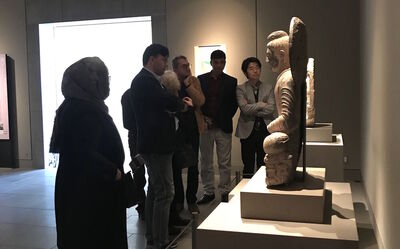

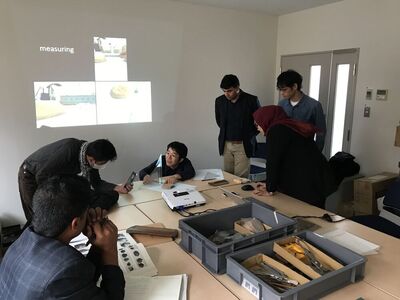
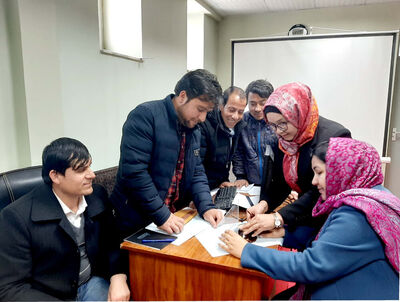
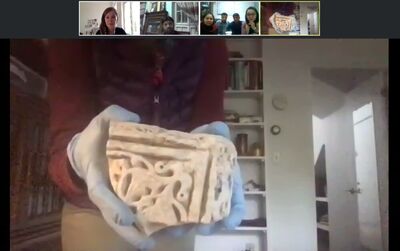
2018-2021—Online curatorial training program and workshop in Kyoto/Tokyo
In With the valuable support and partnership of the Gerda Henkel Stiftung, an online training program was developed in 2017/2018. Following the 2017 discussions, in April 2018, a meeting was held in Vienna with the participation of colleagues from the University of Vienna, Austrian Academy of Sciences, and Dr. Masanori Nagaoka and Dr. Maria Rita Acetoso from the UNESCO Culture Unit (Kabul Office) to plan the new training program (financed by the GHS). The hybrid meeting included virtual discussion with Director Rahimi. Critical to the discussion was how the museum should handle the Mes Aynak objects entering the collection which were excavated during salvage archaeology and thus lacked a secure stratigraphic context. A “Palmyra Talk” focused on the World Heritage Site of Bamiyan and the protection of Afghan cultural heritage was hosted by the Austrian Academy of Sciences in cooperation with ICOM Österreich.
The new curatorial training program focused on the art history of Afghanistan (with an emphasis on Buddhist art) and museum studies, and was instructed by Dr. Natasha Kimmet and directed by Klimburg-Salter. Concurrently, four curators continued their English courses at the American University of Afghanistan.
The online training program was successful beyond our expectations and culminated in an engaging two-week training workshop in Japan in December 2019 with the collaboration of premier research institutions in Kyoto and Tokyo. Emphasis was placed on training in the use of proper research methods, particularly critical examination and evaluation of original objects at Kyoto University (hosting institution), the Ryukoku Museum, the Miho Museum, and Tokyo University of the Arts. The financial support for this bilateral project was provided by Kyoto University’s Institute for Research in Humanities and the Gerda Henkel Stiftung’s Funding Initiative “Patrimonies.”
The collaborative workshop proved highly successful because of the quality of the participants—it brought Director Rahimi and three curators together with extremely committed international experts in art history, archaeology, history, numismatics, and conservation science. Of great value was the fact that the curators took the initiative to share the benefits of this training with other curators in Kabul. The effectiveness of this workshop further confirms the value and importance of ongoing investment in their education and professional networking.
The 2020 online training program continued to focus on art history and museum studies. From fall 2020 through 2021, frequent object study sessions have been held online to better understand and describe artifacts, and to address the issue of identifying authentic versus fake objects. Dr. Susanne Ebbinghaus, Curator at the Harvard Art Museums, joined Klimburg-Salter and Kimmet in leading these sessions, and six members of the Kabul Museum curatorial team are now participating.
A new planned cooperation with the Harvard Art Museums (pending financing) is intended to expand and complement the existing University of Vienna – National Museum of Afghanistan program; if circumstances permit, the program foresees ongoing bi-monthly online study sessions throughout 2022, complemented by an intensive workshop anticipated to take place at the Harvard Art Museums, Harvard University in April-May 2022.
Reports:
KMP-Report Online Curatorial Workshop 2020 (hosted on the website of the Gerda Henkel Stiftung)
Cultural Heritage and its Custodians at Risk
The core mission of the interdisciplinary Kabul Museum Project is to provide support to the National Museum staff in preserving and interpreting their invaluable collections as well as cultural heritage held in regional museums across Afghanistan.
In August 2021, Afghanistan experienced major political upheavals and dramatic changes. As Afghanistan navigates these changes, we must keep in mind the importance of protecting the country’s cultural heritage and its custodians.
We support the statements urging the protection of cultural heritage made by the International Council of Museums (ICOM) on August 17, 2021 and UNESCO on August 19, 2021:
https://icom.museum/en/news/statement-concerning-the-situation-facing-cultural-heritage-in-afghanistan/
https://en.unesco.org/news/afghanistan-unesco-calls-protection-cultural-heritage-its-diversity
Adapted to present circumstances, all parties hope to continue the research collaboration between the National Museum of Afghanistan (Director and curators) and scholars at the University of Vienna, Austrian Academy of Sciences, Kunsthistorisches Museum Vienna, Harvard Art Museums, Kyoto University, and the University of Tsukuba.
For many decades, our project collaborators have actively engaged in initiatives to bring awareness and protection to Afghanistan’s cultural heritage. See Events page for more information.
Events
Upcoming
---
Past
“Entangled Histories: The Bamiyan Buddhas—Past, Present, and Future”
Harvard Art Museums, Online event
Wednesday, September 22, 2021, 7:00-8:15pm (EST)
Speakers: Deborah Klimburg-Salter (University of Vienna / Harvard University), Masanori Nagaoka (UNESCO Office Cambodia)
Event is free. Registration is required. The event will be recorded, and a link will be sent to all registrants afterward.
https://harvardartmuseums.org/calendar/entangled-histories-the-bamiyan-buddhas-past-present-and-future
Title TBD
ICOM Palmyra-Talk
Weltmuseum Vienna, Online event
Thursday, October 14, 15:00 (CEST)
Speakers: TBD, Keynote by Deborah Klimburg-Salter (University of Vienna / Harvard University)
Event is free. Registration is required.
“The National Museum of Afghanistan: Retrieving the Past, Securing the Future”
Harvard Forum on Cultural Heritage, April 6, 2021
Speakers: Deborah Klimburg-Salter (University of Vienna / Harvard University), Mohammad Fahim Rahimi (National Museum of Afghanistan), Philippe Delanghe (Kabul Cultural Unit, UNESCO)
https://shahimaterialculture.univie.ac.at/fileadmin/user_upload/p_shahimaterialculture/Kabul_Museum_Round_Table_Poster_final.pdf
Prof. Deborah Klimburg-Salter’s award speech for the Austrian Academy of Sciences’ prestigious Wilhelm Hartel Prize, 2020
https://www.youtube.com/watch?v=QQxJM8Sg6zg
“Protection of the Cultural Landscapes at the Bamiyan World Heritage Site in Afghanistan”
6th ICOM Palmyra-Talk
Austrian Academy of Sciences, Vienna
April 4, 2018
Speakers: Michael Alram (Austrian Academy of Sciences), Elke Kellner (ICOM Österreich), Deborah Klimburg-Salter (University of Vienna / Harvard University), Keynote by Masanori Nagaoka (UNESCO Kabul Office)
http://icom-oesterreich.at/kalender/icom-palmyra-gespraeche-die-buddhas-von-bamiyan?fbclid=IwAR2C0FQ7tclQ5LJDR7hVRWVTg-Cr6l_ChsLWVBXbOmIVqp6lnzAPQfIi6FI
